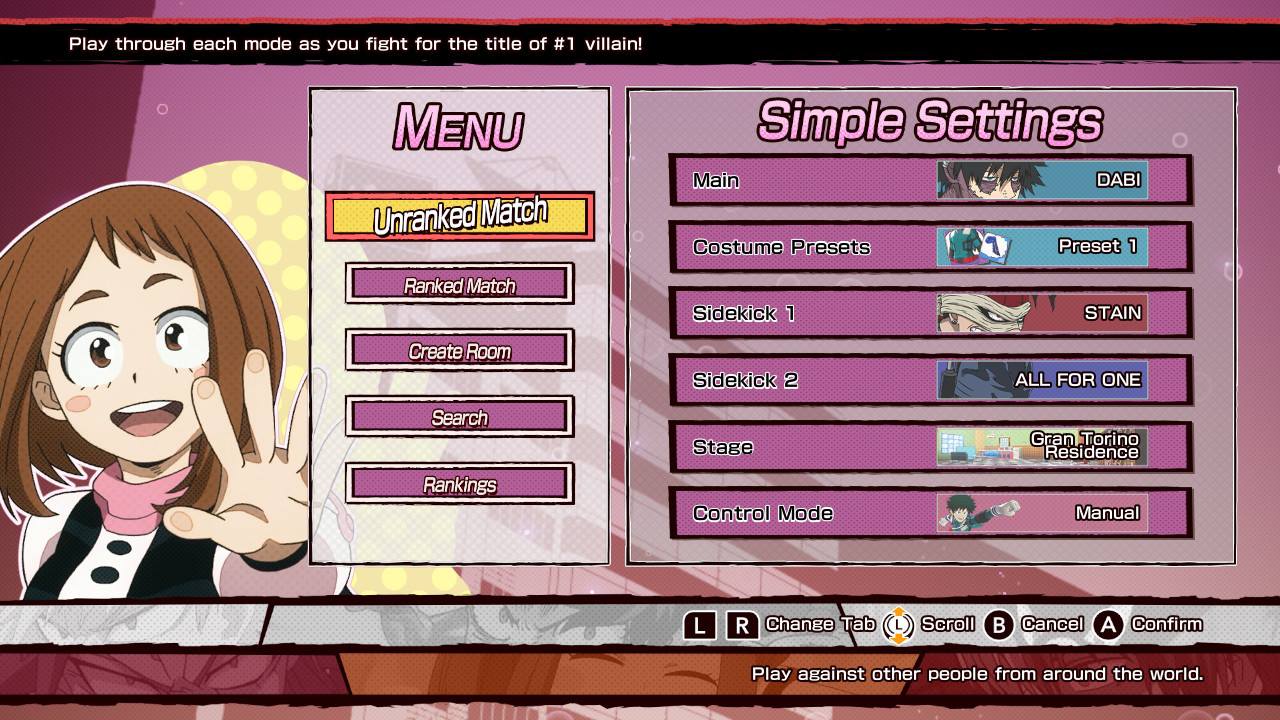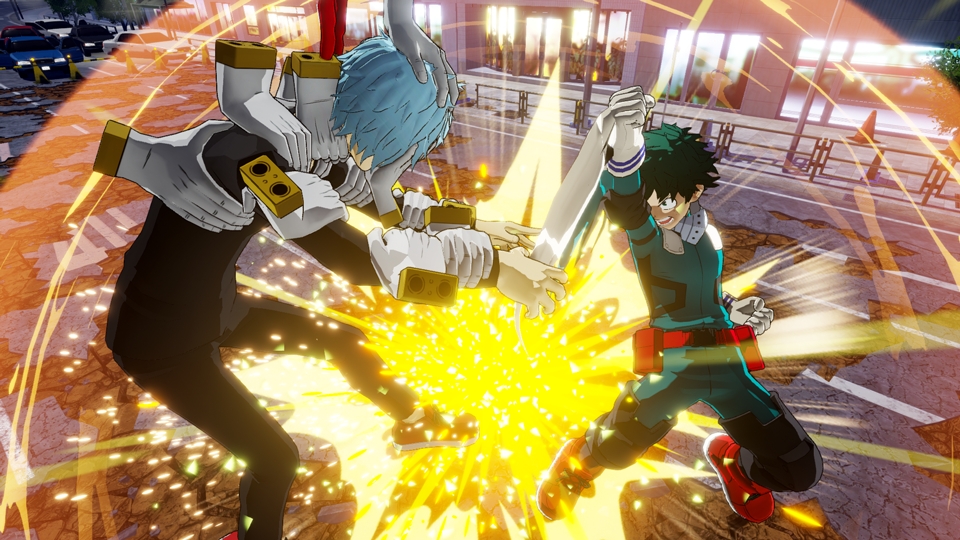My Hero Academia is a cultural phenomenon that spans borders. When I first saw the Japanese superhero show, I was instantly enthralled. Some of my highlights of Anime Expo 2018 were seeing the My Hero Academia film and playing Bandai Namco’s host of games, which included My Hero One’s Justice. Immediately it became one of my most anticipated games of the year. While on the surface One’s Justice may seem like a shallow anime fighting game, it’s one of the most enjoyable I’ve played in ages. There is nothing like playing as your favorite Hero and Villain from the My Hero Academia universe and enacting their unique quirks. Each character is unique with their own strength and weaknesses, making choosing your team wisely quintessentially. The Switch version is the best system to play it on as well, as the portability factor makes this game superior to its more powerful brethren.

In My Hero One’s Justice, you have one primary fighter and two sidekicks, who can come in to assist you at any time. There are several modes in the game: Story Mode, Missions, Local Match, Online Mode, and an Arcade mode and Training mode. There’s so much content packed into the game it’s awe dropping. Story mode is a bit repetitive and begins at the Stain arc, finishing with the arc where Bakugo is captured, having you fight battle after battle after battle. Its form of storytelling in manga-like panels is charming, and It also tells the story from the Villain’s perspective. It’s a great way to learn each character though and there is a tutorial in the beginning against Gran Torino. It’s then up to you to find what characters fit your play style best.

While there’s a lot of content in the game, it does get repetitive, especially the campaign. It’s a great introductory to the game and fans of the anime and manga will enjoy living out this story in game form, but it cuts a lot out and there are too many cases of having to use the same character multiple times. The story mode consists of almost 100 different parts spread over a Hero and Villain portion, Most of these are fights, and a few of them cutscenes to set up scenarios in the story. It’s a lot of fun and not too long and does an excellent job of introducing the player not only to the My Hero Academia world but to the playstyle of each character as well. It’s a two-win situation.

Mission Mode takes you through a series of maps as you battle your way through to the end with your team while leveling up the characters you use. Arcade mode has you fight six successive matches in a row in order to claim victory. In both modes, as well as all fights, you accumulate a score which results in a score, with S being the highest ranking. Story Mode tells you what percentage of your battles are S rankings, which is a nice touch. Higher scores in all modes and meeting certain conditions in battle allow you to unlock items. Some of them are accessories you can use to customize your character’s look in battle, some are stickers for your gamer card; again, there’s so much content packed into the game that although it can be repetitive, you still develop a knack to play it. Not to mention it’s a lot of fun.
The controls aren’t too complicated though once you are familiarized with them with the right character, you could be invincible. The two trigger buttons call in your assist characters, the L button has you dash, X and A are your quirks, Y is your normal attack, and B is jump. There’s a bit more to it than that, and combination attacks that you unlock with your special are devastating, although some can be difficult to pull off. You feel as if you are a true Number One Hero (or Villain) and the speed of the action matches the anime precisely. It’s wholly enjoyable, especially as a fan of the series.

You can create your own gamer card which is displayed every time you play an online match. There are ranked matches, unranked matches, and you can even create your own password-protected room. You can also customize your fighters with accessories to give them their own distinct looks, which gives online play a sense of personability. We didn’t have anything in the way of connection problems and online play incredibly enjoyable, especially on the Nintendo Switch.

Speaking of the Nintendo Switch, the portability factor of the system has to be mentioned. My Hero One’s Justice is perfect for portable play, especially given how quickly you can pick the game up, play a match, and then put the system down. I was able to do this on the Los Angeles Metro and was shocked because I don’t typically play my Switch in portable mode. There aren’t any framerate problems while playing portably and the game still looks fantastic, like you’re in the anime. The Nintendo Switch version of the game is the quintessential version of the game given this factor alone.
My Hero One’s Justice may not be the best fighting game on paper to come out this holiday season, but, it’s probably the most fun of almost any game coming out over the next two months. I loved Soul Calibur, but I had more fun going through My Hero One’s Justice. The game has its flaws and can be very repetitive, but it’s a competent brawler that encapsulates the essence of one of the true anime classics of our time. My Hero One’s Justice has so much to collect, so much to customize, and so much to do that any fan of the series, or even just those interested in the genre, will fall in love at first sight.

One’s Justice isn’t one of my highest scored games of the year, but it does happen to be one of my favorites and the most fun. When it comes down to it, isn’t that what really matters?
- A multitude of different game modes with wonderful storytelling mechanisms
- Incredibly fun gameplay that captures the essence of the anime series
- An abundance of customization and portable mode
- Can get a bit repetitive
